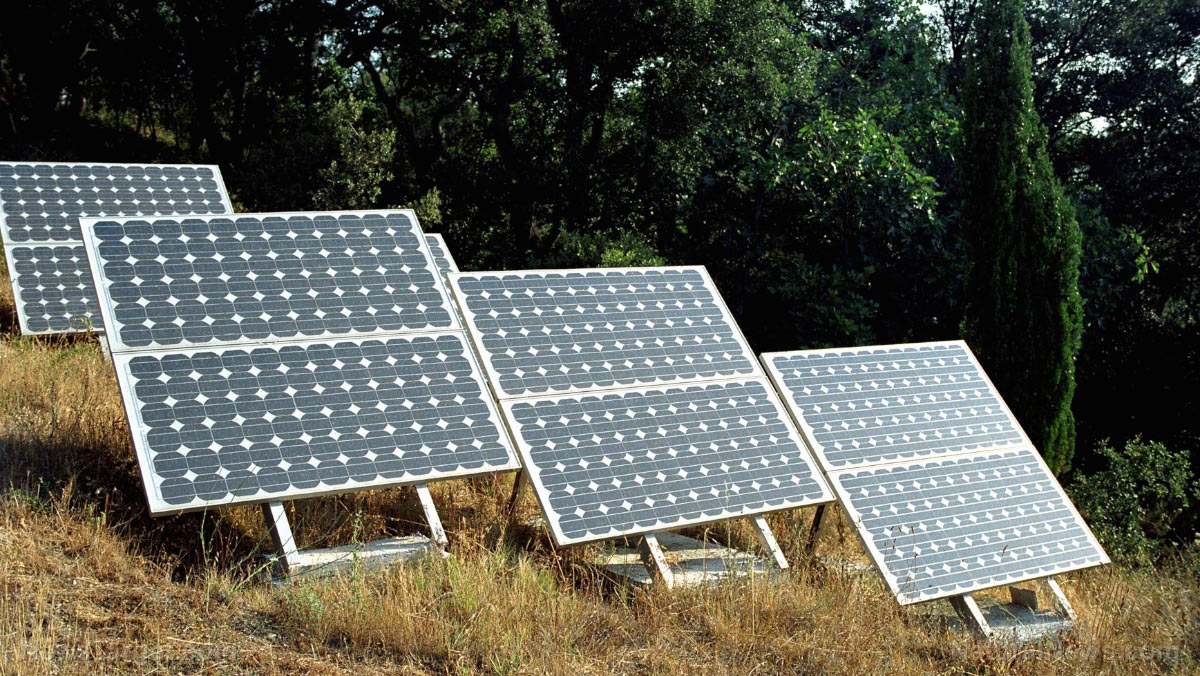
Just last month, darkness blanketed Texas amid extreme weather conditions. As a winter storm forced the state's power grid to the brink of collapse, millions of Texans were stuck in uncomfortable and even dangerous conditions.
It could have been avoided if the state's power utilities invested in resilient backup power technologies to avoid outages and restore power as quickly as possible when outages occur.
Specifically, they should have invested in alkaline fuel cells – one of the most developed fuel cell technologies. (Related: Energy expert: Texas power outage could have been prevented with significant investment.)
Fuel cells generate electricity without emitting carbon dioxide
For the uninitiated, a fuel cell is an electrochemical energy conversion device that produces electricity by combining hydrogen and oxygen into water. Like batteries, fuel cells convert potential chemical energy into electrical energy and generate heat as a by-product.
Fuel cells can continuously generate electricity as long as they are supplied with fuel (hydrogen) and oxygen. For that precise reason, fuel cells only emit water and run ten times longer than traditional backup power sources. With zero carbon dioxide emission, they offer a cleaner, quieter, low-maintenance solution with a smaller footprint.
Substations are typically equipped with backup lead–acid batteries that open up circuit breakers upon sensing a power loss. These batteries provide backup power to substations' critical systems to minimize power disruption and the high costs associated with energy blackouts as well as to enable a quicker return to power once the grid returns.
But a typical battery room can only provide backup power for four to eight hours, which normally is not enough time for the grid to return and for the field engineers to fix damaged power lines and equipment. To overcome the power shortfall, a utility could install more space-intensive battery rooms or rely on diesel generators.
With alkaline fuel cells, consider those problems solved. Fuel cells generally give the maintenance team enough time to restore power to all customers of a substation because they substantially extend battery run-time. Having this extended runtime significantly reduces the stress level for the technical and maintenance teams.
Alkaline fuel cells can be installed with remote management software that uses IoT sensors to analyze and monitor remote substations' performance from a central location. That enables them to provide full visibility into system health and constantly show the duration of backup power available to each substation.
They are weather-resistant and produce auxiliary power that kicks in automatically should the grid go down and provide quick start-up once the power outage ends.
Power outages have substantial economic impact
The economic impact of severe weather events in conjunction with power outages is substantial.
A report by the Federal Emergency Management Agency (FEMA) that assessed the scale of the damage from power outages estimated that around 40-60 percent of small businesses have shut down permanently after a storm and that 90 percent of businesses that were shut for just five days following an extreme weather event eventually fail within a year. (Related: Texas cold snap fuels spike in wholesale power prices.)
Frequent power outages are becoming an unfortunate norm for U.S. businesses. A 2018 survey found that one in four companies experience a power outage at least once a month.
For large companies, the cost of an outage can escalate into millions of dollars per hour of downtime. The Department of Energy estimated that outages are costing the U.S. economy $150 billion annually.
Some of the industries heavily affected by power outages are data center, manufacturing, retail and healthcare.
Uptime's 8th annual Data Center Survey found that 31 percent of 900 respondents experienced downtime in 2018.
Studies have shown that the cost of a U.S. data center outage has grown to $8,851 per minute, which means a full day outage could result in costs exceeding $12 million.
For high volume manufacturers, a power outage can mean disruption that ripples through the entire supply chain. Shipping and receiving can come to a standstill, causing truck drivers and other means of transportation to be delayed or rescheduled.
Microgrid Knowledge offered this example to illustrate the potential costs of outages for manufacturers: Consider a car manufacturer that makes about 1,200 cars a day, and the cost for each car is roughly $50,000. Just one day offline would cost the manufacturer $60 million.
A single supermarket could see hundreds of thousands of dollars in losses from perishable goods being spoiled by lack of refrigeration because of a power outage. When a supermarket in Pennsylvania lost power for more than a day in February 2019, the owner estimated losses of up to $30,000 in merchandise. For large retailers, the cost could reach upwards of $5 million.
Hospital power systems must run smoothly all the time as patients' lives rely on the power being always on.
That's why hospitals are required to have backup equipment – usually diesel generators – to ensure life-sustaining equipment stays on throughout an outage. However, generators are often unreliable and require regular testing and maintenance to ensure they come on when they're needed most.
According to the American College of Emergency Physicians, 16 percent of emergency medical services organizations reported diesel generators not performing as expected during Hurricane Sandy. Six hospitals completely shut down, forcing 6,400 patients to be evacuated. Some affected facilities remained closed for more than 100 days.
Follow Electricity.news for more news and information related to electricity.
Sources include:
Please contact us for more information.




















